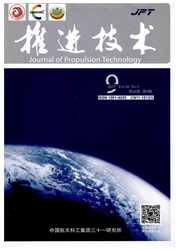

 中文摘要:
中文摘要:
为了更准确地研究变形和应力对航空发动机叶盘性能的影响,在湍流模型理论和叶盘流场模型的基础上,提出了一种可靠性分析方法即双重极值响应面法(Dual Extremum Response Surface Method,DERSM)。在分析中考虑气体压力和离心力作用,合理选取随机输入变量,得到叶盘结构的总体最大变形和最大应力,并作为输出响应;对随机变量进行抽样,通过抽样点拟合各自的极值响应面方程;结合蒙特卡洛法对两个极值响应面模型进行联动抽样,计算出了航空发动机叶盘的可靠性概率。实例仿真表明:当叶盘最大允许变形量为4.2mm,最大许用应力为7.5×10^2MPa时,其可靠性概率为98.61%。与极值响应面法(Extremum Response Surface Method,ERSM)相比,DERSM在保证计算精度的前提下,计算效率提高23.52%,验证了DERSM在叶盘可靠性分析方面的有效性。
 英文摘要:
英文摘要:
In order to more accurately predict the effects of deformation and stress on the performance of aeroengine blisk, a method of reliability analysis called DERSM (Dual Extremum Response Surface Method) was proposed based on the theory of turbulence model and the fluid field model of aeroengine blisk. Considering gas pressure and centrifugal force, the maximum deformation and stress were taken as the objects of blisk reliability analysis with respect to the reasonable random input variables. Extreme response surface equation is respectively fitted to the sample data acquired by extracting the random variables. The reliability probability of aeroengine blisk was obtained by using Monte Carlo method and linkage sampling to two extreme response surfaces. The simulation results show that the reliability degree is 98.61% when the maximum allowable deformation of bladed disk is 4.2mm and the maximum allowable stress is 7.5×10^2MPa. Compared with ERSM (Extremum Response Surface Method), it is demonstrated that the computational efficiency of DERSM increased by 23.52% while keeping the calculation precision. The validity of reliability analysis of blisk based on DERSM is verified.
 同期刊论文项目
同期刊论文项目
 同项目期刊论文
同项目期刊论文
 期刊信息
期刊信息
